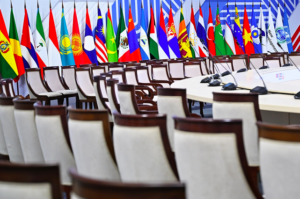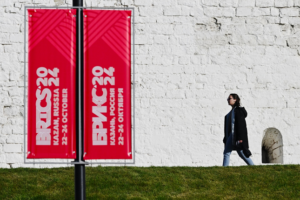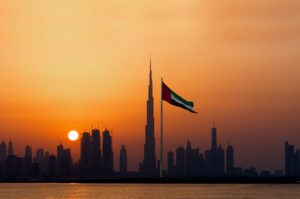This article was first published as a Policy Brief by the University of Central Lancashire’s Northern England Policy Center for the Asia-Pacific (NEPCAP), and can be found here. Thank you to NEPCAP for their kind authorization to re-publish.
This piece briefly discusses the surge in pro-Taiwan sentiments in India in 2020, and attempts to enumerate whether this surge gives any indication of the new decade being witness to the overcoming of old challenges in Taiwan’s relations with India. Thus far, its ties with India have broadly faced three challenges: the first is related to Taiwan’s desire for enhancement of its relations with India in political and diplomatic terms; the second pertains to its dissatisfaction with the pace of growth in bilateral relations; and the third concerns deepening economic ties, particularly under Taiwan’s New Southbound Policy (NSP).
Analysing these challenges, the author argues that the old challenges in relations are likely to persist in the new decade and offers some prescriptions as to how to make relations stay the course despite difficulties. The author would like to give a caveat that his focus on specifying and analysing the challenges does not, in any way, negate the positive developments that relations have seen — a theme which he has been exploring separately.
A short background to understand the challenges
The story of India-Taiwan relations is not yet in the wider international public domain. There are many interesting and educative historical episodes in India-Taiwan relations including: Jawaharlal Nehru and Chiang Kai-shek’s friendship; the Kuomintang’s (KMT) and the Communist Party of China’s (CPC) common perceptions on Tibet and the boundary dispute with India; advocacy in India for making a common cause with the ROC vis-à-vis the PRC in the aftermath of the 1962 war with China and furtive yet unsuccessful efforts towards this end. However, the story of their so-called unofficial relations began in 1995 when they set up economic and cultural relations.
Later, the Chen Shui-bian government of the Democratic Progressive Party (DPP) brought India into the Taiwanese discourse on foreign affairs. Apart from taking several India-specific initiatives for people-to-people exchanges, the most important contribution of the Chen government and the DPP was to project a possible India-Japan-Taiwan triangle of democracies that could act as a bulwark against China. The idea of India’s importance as a possible ally, partner or friend has persisted in the DPP’s discourse ever since. The current President, Tsai Ing-wen, has time and again emphasised the importance of relations with India. In fact, she initially mentioned India as the target country of the NSP along with ASEAN countries, though the term South Asia replaced India in the policy documents later. (1)
The challenges
Now the question is, what challenges has Taiwan faced in relations with India in the last two decades?
First and foremost, while Taiwan has been pushing to raise the profile of its relations with India, India’s response has been very guarded, cautious and restrained. Analysing India’s approach towards Taiwan, one can perceive that the government still remains very careful. However, a cerebral hyphenation between China and Taiwan appears to have taken place in India’s official and intellectual elites’ perspectives on Taiwan over two decades and it has begun respecting Taiwan as a separate entity from China, not adjunct to it. The period around 2008 and 2010 can be considered as a cut-off when India began vocally demanding reciprocity for its support for the PRC’s One China policy.
After this, India appeared to be developing comfort and confidence in its relations with Taiwan. There are several pointers to establish this assertion. In the last decade, India has often subtly conveyed to China that it is aware of Taiwan’s value as a tactical lever to exert pressure on China, or as they say in India, the “Taiwan card.” However, its signalling has not gone beyond a point and has not given any benefits to Taiwan in diplomatic terms. For example, Taiwan’s expectations for minister-level visits from and to India, the renaming of Taiwan’s representative office in New Delhi and dialogue and consultations at high official and political levels are far from being met.
The second challenge pertains to Taiwan’s dissatisfaction with the pace at which things move in the relationship. It is partly the result of bureaucracy and partly the result of India’s cautious approach at top political levels. India’s foreign ministry establishment’s long habituation and attuning to India’s support for the PRC’s one-China policy also plays a role in the slow growth of relations with Taiwan. A lot of mental and professional considerations appear to be at work on the part of the foreign ministry establishment.
As for the third challenge regarding the prospect of success of the NSP in India, one should note that economic relations have shown optimism, albeit in a limited way. Except for a free trade agreement which has not materialised yet, the institutional framework, that facilitates trade and also investment, is in place. If trade has remained stagnant and Indian expectations of substantial Taiwanese investment have fallen short, it has basically to do with structural economic reasons, not so much with political constraints.
Understanding India’s approach and attitude towards Taiwan
The reason for this situation is that in any security-strategic assessment of India, China is a far bigger and a far more complicated reality as a neighbour. Even now, when relations with China are at their perceptible worst, the priority for India – or for that matter both India and China – is to salvage relations. It is very difficult for India-Taiwan relations to move beyond the Chinese shadow. One may recall that the initial three years of Prime Minister Modi, who has been very assertive towards China, saw a sudden increased momentum in relations with Taiwan. A number of agreements and MOUs, signed one after another in quick succession, marked this momentum. Modi even invited Taiwan’s representative to his oath-taking ceremony in 2014.
Such examples indicated that India was consciously recalibrating its relations with Taiwan. However, after the Doklam military standoff between India and China from June to August 2017, the usual circumspection in India about relations with Taiwan returned. After the Doklam crisis, the focus turned towards mending fences with China. The informal summits between Prime Minister Modi and President Xi grabbed the headlines in India-China relations. As a consequence, no big news has been heard about India-Taiwan relations. In the meantime, India-China relations once again have taken a sharp turn towards their most severe deterioration since the 1962 India-China war.
To sum up, now, with around one hundred thousand soldiers on both sides standing face-to-face in the Himalayas since May-June 2020, it is unlikely that India will take any action vis-à-vis Taiwan that may cause further deterioration in relations with China.
Surge in pro-Taiwan sentiments in India in 2020
With this backdrop, what should one make of the surge of pro-Taiwan public sentiments in India in the year gone by?
It is beyond doubt that the year 2020 saw a huge increase in public awareness in India about Taiwan, Taiwan’s fight for a place in the World Health Organization (WHO) and cross-strait relations. Taiwan’s coverage in Indian newspapers suddenly increased. National dailies carried editorials supporting Taiwan’s cause for entry into the WHO. Some TV channels hosted exclusive primetime debates on Taiwan, precisely on cross-strait relations and the WHO issue, for the first time. Political leaders openly issued statements in favour of Taiwan. Indian newspapers haughtily laughed off Chinese suggestions not to cover Taiwan’s Double Ten Day national day ceremonies hosted by Taiwan’s representative office. In fact, a political worker hoisted the ROC flag near to the Chinese Embassy, to mock China.
Some media commentators had appealed to India to use the Taiwan card during the Doklam crisis too, but the public attention Taiwan enjoyed in India in the year 2020 was nevertheless unprecedented. Three reasons — the accusation against China of mishandling the Covid-19 outbreak; attention to Taiwan’s success in containing the outbreak, and China’s military aggression against India in the Himalayas — converged and occasioned the surge. One should also note that over the period, Taiwan’s public diplomacy outreach to India has intensified. Think-tanks, universities, and entrepreneurs in industry and services, and to some extent political parties as well, have been the focus of this public diplomacy outreach. The coverage, attention and support Taiwan received in the year gone by can also be attributed to the success of Taiwan’s public diplomacy.
A one-sided surge
Nevertheless, the surge was more or less one-sided. A similar surge was not seen in Taiwan in support of India against Chinese actions, as one could glean through English media and social media sources from Taiwan. This was despite the emphasis on a democratic solidarity with India and a rhetoric of common hedging against China that we see in the Taiwanese foreign policy discourse. President Tsai and Taiwan’s Ministry of Foreign Affairs took much time to issue statements that could be deemed as supporting India. Tsai, for example, made a reference to Chinese aggression in the Himalayas in her Double Ten Day speech. Taiwanese Foreign Minister, Joseph Wu criticised China in an interview with an Indian TV channel one week after Tsai’s speech. Separately, the official ROC maps depict the India-China border in the northern Himalayas in the same way as the PRC maps do. Incidentally, Taiwan did not issue any statement during the Doklam crisis either. To be fair to the Taiwanese, Taiwan’s reticence is understandable as its relations with China are even trickier and more fragile than India-China relations.
The point here is that both India and Taiwan appear to be reluctant to publicly issue statements and display interest in each other’s political and security-related issues.
Conclusion
Reading the surge in pro-Taiwan sentiments in India in 2020 alongside longstanding and macro-level trends in India-Taiwan relations, one can argue that stronger India-Taiwan relations, that are totally free from the Chinese shadow, remain a pipe dream. The China challenge to India-Taiwan relations will persist in the new decade. Growth in India-Taiwan relations is likely to remain slow and follow an ad hoc or an as-and-when route. A normative framework for India-Taiwan relations is unlikely to emerge anytime soon.
Therefore, Taiwan’s dissatisfaction with the pace at which things move in relations will continue for the better part of this decade. In this somewhat pessimistic sounding assessment of bilateral relations by the author, the NSP indeed gives reason for optimism. India welcomes Taiwan’s NSP and has shown interest in it. To what degree it will receive active governmental support in India, and how much it will be successful in pursuing its stated objectives and goals in the country, remain to be seen. It very much fits in India and Taiwan’s schemes of creating alternate, resilient and diversified supply chains, reducing dependence on China. Since decreasing this dependence has been the focus of the two governments’ strategic discourse in a big way, this logic has the potential to be a game changer in relations.
Policy prescriptions
In keeping with the discussion thus far and looking at conclusions derived from it, one can offer the following three broad policy prescriptions:
- Playing up the Kautilyan maxim of “the enemy of my enemy is my friend” is counter-productive and actually does not add much value. There should not be an obsession with “political relations.” Moreover, what is “political” in relations depends on how one looks at it. To have robust economic and cultural relations by themselves could be a political decision. Furthermore, below-the-radar security cooperation does not need a policy prescription from scholars.
- Taiwan should focus on consolidating the gains its public diplomacy has accrued in India. Its public diplomacy efforts should be directed more towards removing unwarranted checks that it may be facing, in conducting its normal economic and cultural engagement with India.
- India should accept convergence between Taiwan’s NSP and its own Act East Policy as the organising framework for relations. It should acknowledge that Taiwan’s role is crucial in creating alternate, diversified and resilient supply chains in the Indo-Pacific region. Accordingly, it should have an unambiguous policy in place for the smooth facilitation of relations with Taiwan under the proposed framework.
(1) It should be noted that even though the KMT’s Ma Ying-jeou government did not commit itself to the rhetoric of democratic solidarity or hedging against China the way the DPP governments have done, it advanced closer relations with India in a more regular and official and low-profile manner in keeping with its policy priority for peaceful relations and deeper engagement with mainland China.
Picture credits: Indiplus News







Be First to Comment